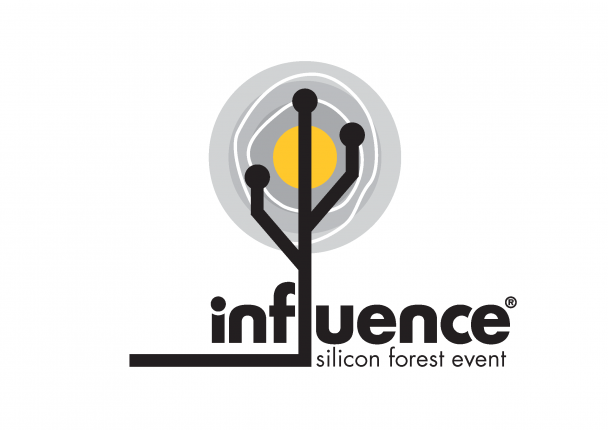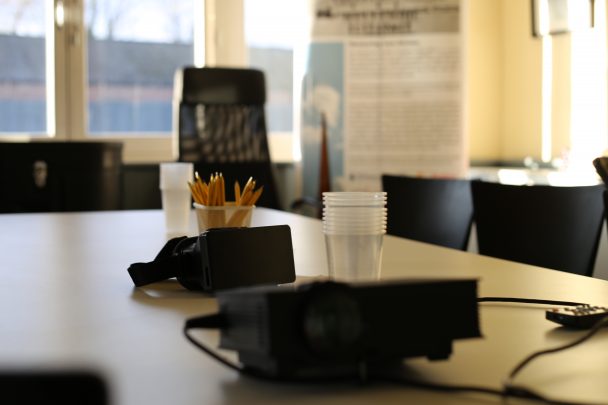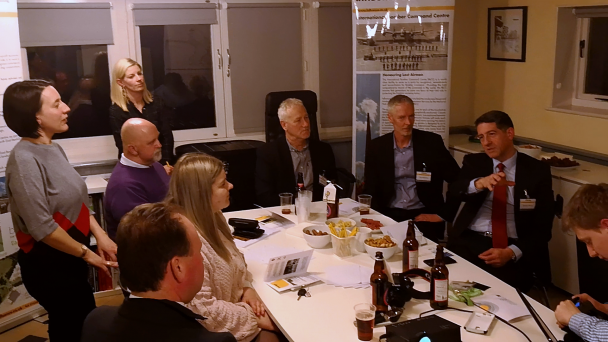New Horizons for Landscape Architecture through Technology
On 6 March, Influence hosted a Silicon Forest event, a campaign funded by the Newark and Sherwood District Council to promote Newark as the next hub for technological innovation, highlighting technology in ‘hidden industries’ and sharing what future technology is in store for Landscape and Planning.

Influence was invited by Silicon Forest to share how we use technology in our business and to discuss, with an invited audience, what the future holds for technological advances within Landscape Architecture. Their Mission Statement is to:
“Establish Newark & Sherwood as a national centre of excellence for innovation and technology”
Newark is primed due to its location, accessibility and wealth of opportunities to become a powerhouse in its own right. Welcoming a select list of project managers, planners, engineers and designers the event gave Sara Boland, Director and Shona Hatton, Associate Director at Influence, the opportunity to explain our use of technology in our core disciplines of landscape planning and design.

In her overview of landscape planning, Sara, explained the use of ‘GIS’ (Geographic Information System) software and how the data enables us to create informed Landscape and Visual Impact Assessments with accuracy. Describing the method for taking representative views she explained how views will remain professionally subjective, no matter how far technology advances. Stating
“…the personal experience of a site will always be paramount. However, this does not mean future technology will not assist with our professional reasoning and evaluation”.
Shona, head of Landscape design, introduced using ‘GIS’ within CAD; the use of drawing software such as AutoCAD, KeySCAPE and Adobe Illustrator; graphics manipulation through Adobe Photoshop, Sketch Up and Adobe InDesign; and combining it with hand drawing to quickly and efficiently produce detailed and beautiful designs.
A Futuristic Landscape
Collectively we then discussed the future of technology in Landscape Architecture:
![]() Drones are poised to become an asset for Landscape Architects, delivering a deeper understanding of sites. Giving unrestricted access to sites and defeating obstacles before they arise. In design, it gives the opportunity to represent a project in a universally understandable way through manipulation of drone footage.
Drones are poised to become an asset for Landscape Architects, delivering a deeper understanding of sites. Giving unrestricted access to sites and defeating obstacles before they arise. In design, it gives the opportunity to represent a project in a universally understandable way through manipulation of drone footage.
![]()
Virtual Reality (VR) offers a chance to experience a landscape site from the comfort of an office, efficiently reducing costs for the client. VR also provides a new way to design and give clients the opportunity to really see and experience our vision for their project. Click here to see a video from Leonard Design Architects about design in VR.
![]()
Artificial Intelligence (AI) could also soon see its application in Landscape Architecture. AI can be used to recognise patterns and sequences and translate or output data through neural networks. The realistic approach would be to represent views through learned images to show representations that otherwise could not be achieved, for example: day to night, summer to winter and variations in weather. To see representations of this technology click here and here.
![]() Augmented Reality (AR) will present us with the chance to give a representation of what the planned development will look like in real-time. Overlaying a 3D rendered image over that of a camera, through a phone, will give everyone the tools they need to see accurate representations of developments. AR will add to our designs, making schemes interactive and intuitive. For example, by overlaying proposed planting onto existing views. To see a representation of this technology click here.
Augmented Reality (AR) will present us with the chance to give a representation of what the planned development will look like in real-time. Overlaying a 3D rendered image over that of a camera, through a phone, will give everyone the tools they need to see accurate representations of developments. AR will add to our designs, making schemes interactive and intuitive. For example, by overlaying proposed planting onto existing views. To see a representation of this technology click here.

The evening’s discussions reached the conclusion that Landscape Architecture is a constantly evolving profession and that technology will continue to change, adapt and improve our planning and design skills. Technology will make the delivery and marketing of our core business more efficient but ultimately landscape planning and landscape design are based around a perceptual and physical experience of reality and this can never be replaced by machines.
Click here to read about the inspirations behind Bomber Command